Locations
457 to 480 of 5489 results
-
Vogelkijkhut de Rottige Meente
-


Accept cookies to see this content.
Vogelkijkhut de Rottige Meente
 Nijetrijne
Nijetrijne
-
-
Vakantiewoning Holwerd
Vakantiewoning Holwerd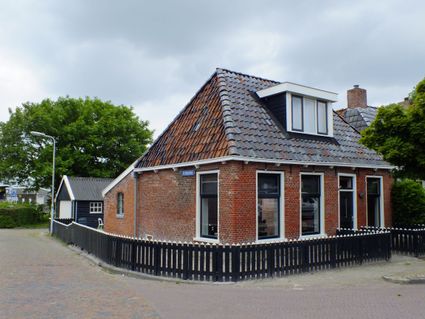 Holwerd
Holwerd
-
Jekelsteeg
Jekelsteeg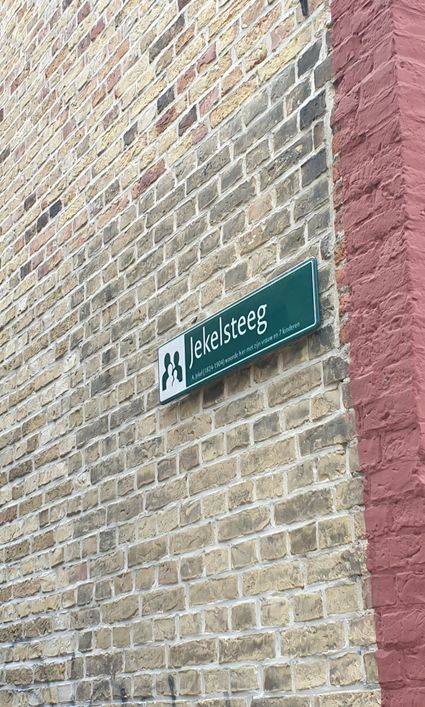 Harlingen
Harlingen
-
Familieboten
Familieboten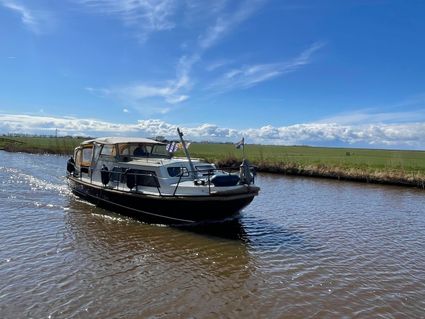 Franeker
Franeker
Direct boekbaar
-
Restaurant Marhaba
Restaurant Marhaba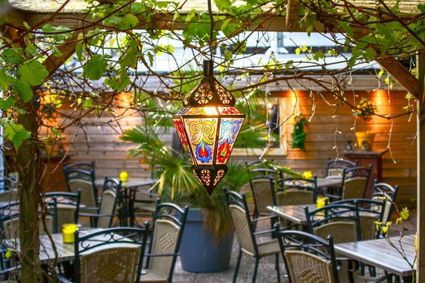 Drachten
Drachten
-
Boerderijwinkel Jansma Haule
Boerderijwinkel Jansma Haule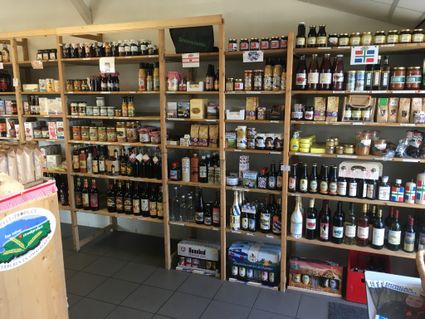 Haule
Haule
-
Reginakerk Zweins
Reginakerk Zweins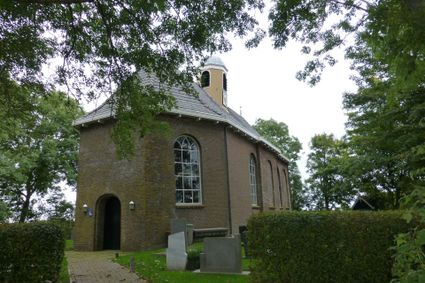 Zweins
Zweins
-
Oosterwolde (Easterwâlde)
Oosterwolde (Easterwâlde)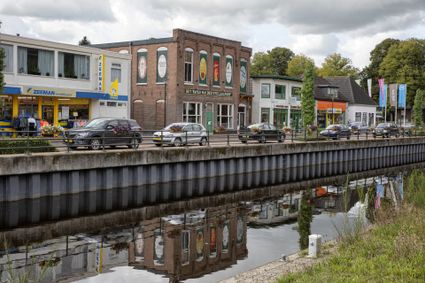 Oosterwolde
Oosterwolde
-
Bar Bistro DuCo
Bar Bistro DuCo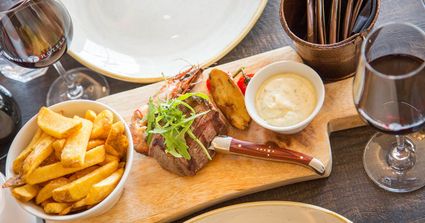 Leeuwarden
Leeuwarden
-
Wikelerbosk
Wikelerbosk Wijckel
Wijckel
-
Boerderijshop.com
Boerderijshop.com Arum
Arum
-
Nivon natuurkampeerterrein De Meenthe
Nivon natuurkampeerterrein De Meenthe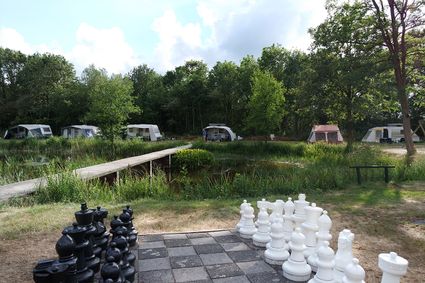 Noordwolde
Noordwolde
-
ienie mini's
ienie mini's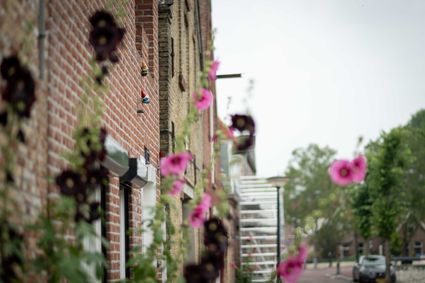 Franeker
Franeker
-
Camping Hammerslag
Camping Hammerslag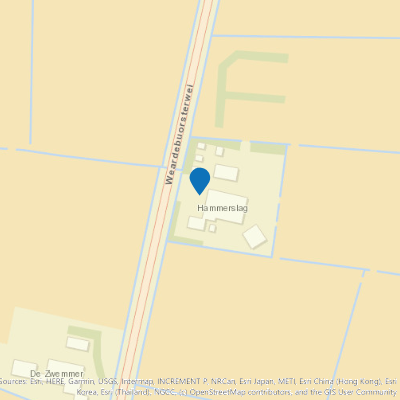 Westergeest
Westergeest
-
Kampeerboerderij De Boere zwaluw
Kampeerboerderij De Boere zwaluw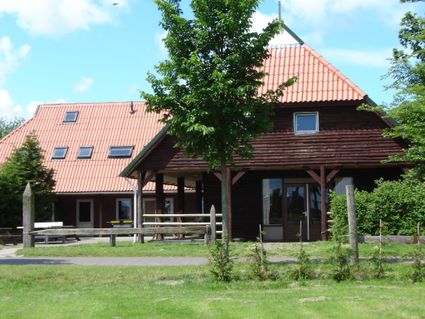 Buren
Buren
-
Gaasterland Forests
Gaasterland Forests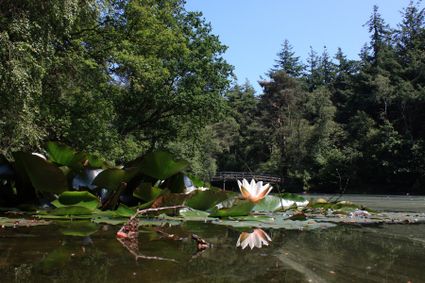 Oudemirdum
Oudemirdum
-
Kleine Bredeplaats 16
Kleine Bredeplaats 16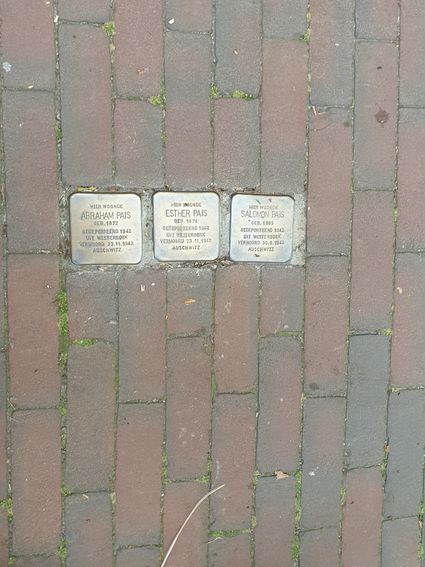 Harlingen
Harlingen
-
Friese Meren Villa's
Friese Meren Villa's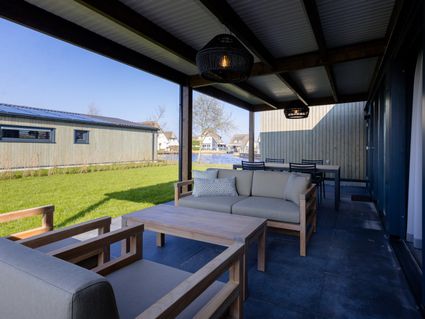 Echtenerbrug
Echtenerbrug
Direct boekbaar
-
Restaurant Nazareth
Restaurant Nazareth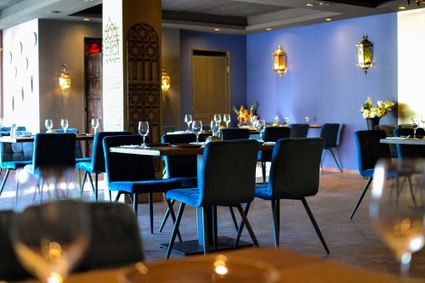 Drachten
Drachten
-
Sanzi Yacht Charter - Lene
Sanzi Yacht Charter - Lene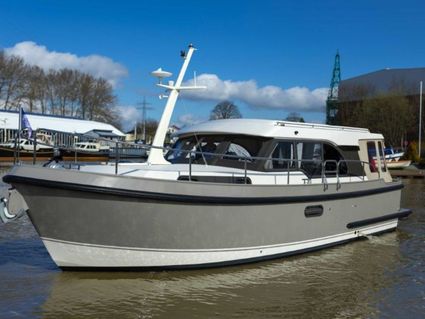 Sneek
Sneek
Direct boekbaar
-
Café Hulst
Café Hulst
In deze nog nauwelijks herkenbare boerderij uit 1881 werd het vroegere “café Wed. R. Zwart” gerund. In 1921 aanmerkelijk verbouwd tot café-restaurant door de toenmalige nazaat en uitbater, Jan Zwart. Het etablissement heette toen Café Zwart. Deze uitspanning is vooral ook bekend door de stakingsbijeenkomsten eind 19e eeuw.
Janke van Vondel, oud 64 jaar, arbeidster uit Appelscha, is de enige vrouw die in de parlementaire enquête over de veenderijen – zowel in Fryslân, Groningen als Drenthe – aan het woord komt. Zelf werkt ze niet meer in het veen, dat kan ze niet meer. Maar tot haar zestigste heeft ze dat altijd gedaan. Ze geeft de commissie onomwonden haar mening. “Waar is de plaats der vrouw? Thuis! Dan kregen de kinderen betere opvoeding en beter onderwijs. Nu eens verbrandt er een kind, dan weder verdrinkt er een. Dat kan voorkomen worden.” Een dergelijk citaat geeft reeds aan hoe erbarmelijk de omstandigheden waren waaronder destijds mannen, vrouwen en kinderen in de Ooststellingwerver venen hun werk moesten verrichten. Het ging om lange werkdagen, zwaar werk en slechte verdiensten, waarbij de lonen niet vooraf waren vastgelegd. De arbeiders wisten niet precies wat ze het komend veenseizoen zouden verdienen en legden zich er bijvoorbeeld knarsetandend bij neer dat turven per stok werden gerekend, zonder te weten wat deze maat officieel inhield.
Ook de vakbondsredevoeringen van Pieter Jelles Troelstra in Café Zwart zijn legendarisch. En ook diens bemoeienis met de broodstaker Bruinsma is een bekend gebeuren. Troelstra zou in 1893 met de Appelschaster veenarbeiders te maken krijgen, toen hij Bruin Tjibbes Bruinsma voor de rechtbank verdedigde. Deze was voor zijn optreden bij de stakingen van 1888 uit zijn huis gezet, zou de eerstvolgende jaren in zijn eigen dorp geen werk meer vinden en moest eerst in de Drentse venen en daarna in Duitsland zijn brood verdienen. Voor zijn interventie bij de armmeesters – hij zou de armvoogd hebben gedwongen brood te geven en een veldwachter met de dood hebben bedreigd – kreeg hij 15 maanden cel, de briljante verdediging van Troelstra ten spijt. Het gevolg was wel, dat progressieve liberalen zich gingen bemoeien met de armoede in Friesland en de vervolging van socialisten en arbeiders- en stakingsleiders. Ook hier: resultaat op langere termijn.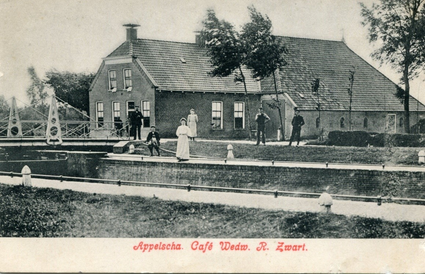 Appelscha
Appelscha
-
-
Berltsum (Berlikum)
Berltsum (Berlikum)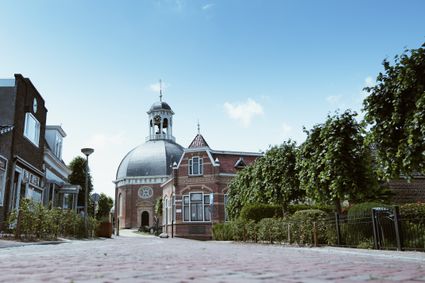 berltsum
berltsum
-
The liberation of Leeuwarden
The liberation of Leeuwarden
On 11 April 1945, it became clear that German resistance in the north of the Netherlands was limited. On 12 April, the Allies seized this opportunity to advance on Friesland as quickly as possible. One of the main goals was to liberate Leeuwarden. The 9th Canadian Infantry Brigade was designated for this purpose. But things would turn out differently.
On 12 April, the Royal Canadian Dragoons entered Friesland at Noordwolde. They were to conduct reconnaissance with their armoured vehicles and reach the Wadden Sea as quickly as possible. As a result, the German troops in Friesland and Groningen would be separated.
On the night of 14 to 15 April, three Squadrons of the Dragoons were at Suameer. Burgum could not be reached earlier that day, because the bridge at Burgummerdam had been blown up by the Germans.
Meanwhile, all sorts of things were happening in nearby Leeuwarden. On 12 April, the airfield had been blown up by the Germans. And they left the city on 14 April. Leeuwarden would not be defended. The Burgerweeshuis (Civil Orphanage) that had housed several German agencies was set on fire. An attempt to blow up the telephone exchange failed due to an ingenious intervention by the resistance. In the early morning of 15 April, the resistance also took to the streets en masse to occupy important points and to capture Germans who had remained behind.
The Dragoons in Suameer were in contact with the resistance in Leeuwarden. Due to various reports, it was unclear whether there was now heavy fighting in Leeuwarden or whether the Germans had left the city completely. Because the Germans had blown up important bridges on the route from Heerenveen to Leeuwarden, the infantry could not quickly provide assistance.
So, the Dragoons went to take a look for themselves. Initially, a patrol of four vehicles was sent via the Groningerstraatweg into the city around half past eleven. One of the Canadians in those vehicles recorded the following:
"As we entered the city, passing through the concrete barrier by the narrow passageway left for normal traffic, we were met by an almost hysterical patrol of Resistance men [...] In a few moments the news of our arrival had spread through the city, and we were given a fantastic welcome as we rolled slowly forward into the centre of town."A resident of Leeuwarden recalled:
"We lived close to the Groningerstraatweg, where our liberators passed. Many hundreds of us stood there, all happy spectators. All of a sudden, two ladies from the row flung themselves forward and threw their arms around the Canadians' necks, saying: "Oh darlings, you’re here at last!"After the patrol determined that the coast was clear, the entire C Squadron, a detachment of the Royal Canadian Engineers and Regimental Headquarters of Lieutenant-Colonel Landell followed. Leeuwarden had been liberated. After this, thousands took to the streets. One of the Canadians wrote:
"We halted, and were immediately surrounded by laughing, yelling mobs of people, bringing flowers to give to us, and cheering every move. The Resistance men were everywhere, doing their best to keep the people within bounds and off the cars, but their efforts were hardly necessary. I never saw a more satisfying gathering in my life."Leeuwarden had been liberated by the Dragoons through unexpected circumstances. On the night of 15 to 16 April, Canadian infantry moved into the city.
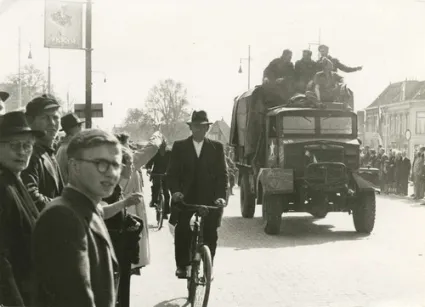 Leeuwarden
Leeuwarden
-
-
Rondvaartbedrijf Allure
Rondvaartbedrijf Allure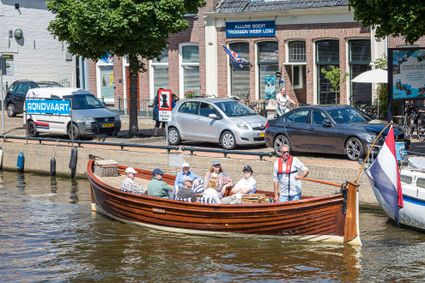 Sneek
Sneek
Direct boekbaar

